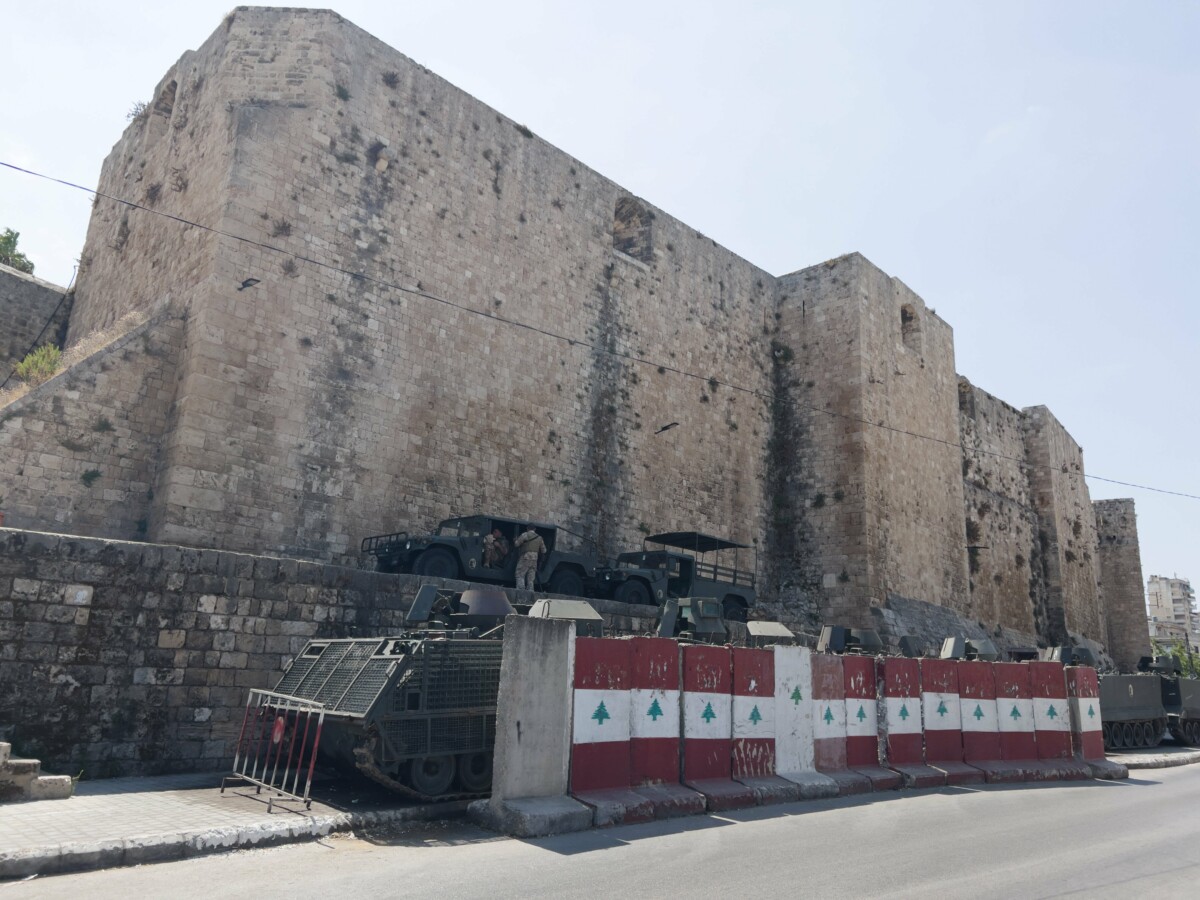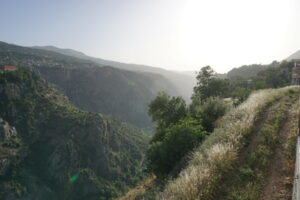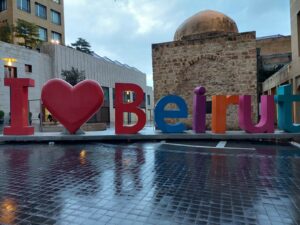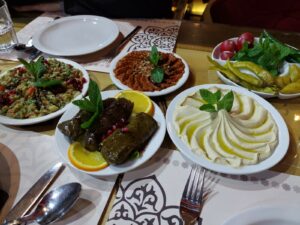Discover the diversity of Lebanon: beauty, strife, resilience & hope
Discover the wonders of Lebanon on this unforgettable tour that takes you to Beirut, Sion, Baalbek, Jeita Grotto, Tripoli, and Qadisha Valley. Explore ancient ruins, marvel at stunning landscapes, and experience vibrant culture as you journey through some of the country’s most captivating destinations. From the cosmopolitan capital city to the UNESCO World Heritage Site of Qadisha Valley, this tour offers a rich tapestry of history and natural beauty. Join us for an adventure that will immerse you in the fascinating past and present of Lebanon.







General info
| Start date | 7 August 2024 |
| End date | 13 August 2024 |
| Days | 7 days / 6 nights |
| Price | € 1445 Syria combo: € 2,695 |
| Including | Accommodation (shared) Transportation on the ground Local guide Breakfast Entry fees |
| Excluding | International flights Single room (€ 475) Insurance Visa Lunch & Dinner Tips for the guide Personal expenses |
Itinerary
Wendesday 7 August – Beirut
- Arrival in Beirut.
- Meet the guide at the airport.
- Hotel drop off.
- Overnight stay in Beirut.
Thursday 8 August – Beirut City Center
- Highlight: Today we start with a city tour of Beirut downtown, the historical and
- the geographical core of Beirut.
- After the city center was destroyed by the Lebanese Civil War, it underwent thorough reconstruction in 1994, which restored its cultural and economic position in the region. This area includes Martyrs Square, Nejmeh Square with the famous clock tower, the Roman Ruins and Bathes, Mohammad El Amin Mosque and Saint Georges Church.
- Continue to walk through the corniche, and enjoy the views of the pigeon rocks, this natural landmark is on Beirut’s western tip. It is also a popular tourist destination known for its iconic rock formations in picturesque seaside surroundings.
- From the port you can see the area where the blast occurred in 2020.
- Overnight stay in Beirut.
Friday 9 August – Beirut – Sidon – Tyre
- Drive to the coastal city of Sidon, an important commercial center with a wealth of history.
- Highlight: See the Sea Castle, which was built by Crusaders in the 13th Century.
- Visit the Khan El Franj, an old Ottoman caravanserai.
- Visit the Audi Soap Museum, Sidon is famous for its soap.
- Continue towards Tyre (also known as Sur), one of the oldest continually inhabited cities in the world.
- Explore two archaeological sites and feel its prosperity which was based on an industry of purple-dyed textiles, and visit the UNESCO-listed ruins built during Roman times.
- Return to Beirut.
- Overnight stay in Beirut.
Saturday 10 August – Beirut – Baalbek – Anjar
- Drive to Baalbek.
- Highlight: Explore the Roman ruins of Baalbek, also called Heliopolis. It includes the famous Temple of Bacchus. The site is a dedication to the gods of Jupiter, Venus and Mercury, and was classed a UNESCO World Heritage Site in 1984.
- Continue to visit the Umayyad ruins of the city of Anjar. Feel the remnants of an 8th-century palace city ruled by the Ummayad dynasty; and feel the ruined temples, arcades and gates built in Hellenistic and Roman style.
- We drive to Chateau Ksara for a wine-tasting experience overlooking the Bekaa Valley. Lebanon is famous for its wine so a tasting can’t be missed.
- Return to Beirut.
- Overnight stay in Beirut.
Sunday 11 August – Beirut – Byblos
- Highlight: Drive north to Jeita Grotto and enjoy a train shuttle and boat trip inside an underground lake in the cave.
- Proceed to Harissa to visit the Shrine of Our Lady Lebanon, which is a Marian shrine and a pilgrimage site. We also include a cable car ride to the top to enjoy the panoramic view of Jounieh Bay.
- Drive to the ancient Byblos, the “oldest continuously inhabited city in the world” to visit the famous Crusader castle and discover some beautiful churches and the old souks.
- Explore the small streets of Byblos.
- Return to Beirut.
- Overnight stay in Beirut.
Monday 12 August – Beirut– Batroun– Tripoli
- Drive to the second largest city of Lebanon: Tripoli, whose history dates back at least to the 14th century BCE.
- Highlight: Visit the Citadel of Raymond de St. Gilles, the largest Crusader fortress in Lebanon; Al Mansouri Great Mosque and the Taynal Mosque. It has the second-highest concentration of Mamluk architecture after Cairo.
- Visit the old souks and learn more about the local culture.
- Visit Al Mina port.
- Highlight: Drive to the Phoenician Sea Wall at the city of Batroun, a flourishing city and port in Phoenician times (3000 – 64BC). It is also a major tourist destination in North Lebanon.
- Continue to Beirut.
- Overnight stay in Beirut.
Tuesday 13 August – Beirut
- Airport drop off.
- End of the tour.
- Or: Continue with Syria Carnival Tour.